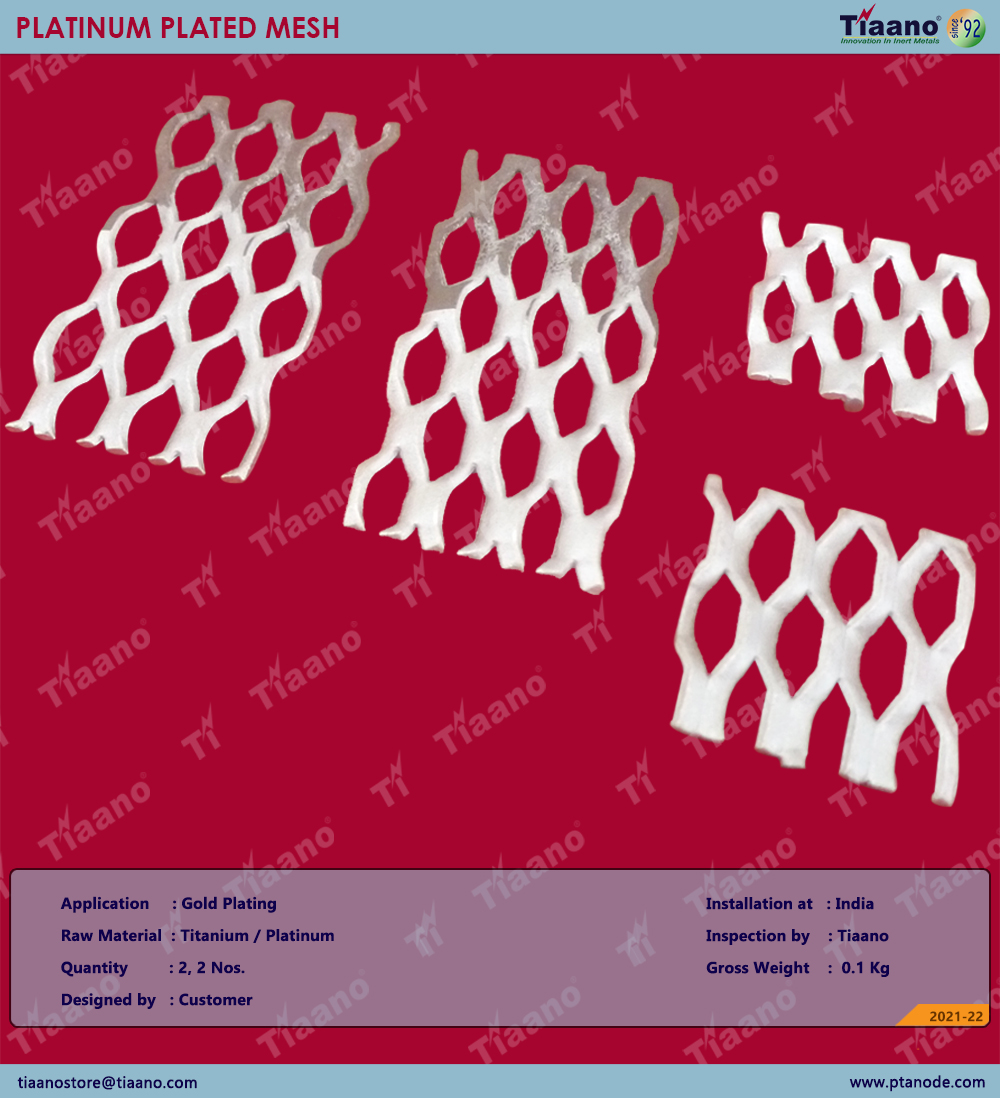Platinized titanium anode is a layer of platinum on titanium substrate. It is lasting, non-consumable and insoluble in the electrolyte, it is widely used in electroforming, electroplating and hard chrome plating field.
Tiaano manufactures platinized titanium anode by adopting Electro deposition process to get a dense wear-resistant layer of platinum coating. The anode surface is changed to improve adhesion of platinum and to significantly improve uniformity of coating or plating thickness. Also reduce the plating porosity imparting greater acid resistance to the anode. This platinum plated titanium anode can be fabricated into Plate, rod, sheet, mesh and other customized shape to meet the special needs.
Platinum Titanium Anode:-
Base material: Titanium Grade one
Plating material: Pure platinum
Technology: Electroplating or Electro Deposition
Size: Customization / Standard
Shape: Rod, Mesh, Wire, Tube, Sheet, plate etc
Features of Platinized Anode in Electro Plating or Electroforming:-
Anode Dimension remains constant over time
Energy savings
High corrosion resistance
High dimensional stability and load resistance
High levels of adhesion of the precious metal coating
Improved resistance to acid attack
Increased throughput with reduced plating times
Light weight (especially the mesh anode)
Long operating life; maintenance-free
Long service life under higher current density in acidic solutions
Produce complex shape of anode
General Application of Platinized Anode:-
Precious metal electroplating - Au, Pt, Pd, Rh and Ru baths
Non-ferrous metal electroplating - Ni, Cu, Sn, Zn and non-fluoride Cr baths
Printed circuit boards electroplating / Semiconductor
Impressed Current Cathodic Protection (ICCP)
Water Ionization / Water Ionizer
Electrolytic Chemical Production
Biomedical application
Projects for Reference:-
Platinized Titanium Mesh Anode for Gold Plating
Platinised Titanium Tube Anode for Hard Chrome Plating
Platinzed Titanium Anode for Electro Plating
